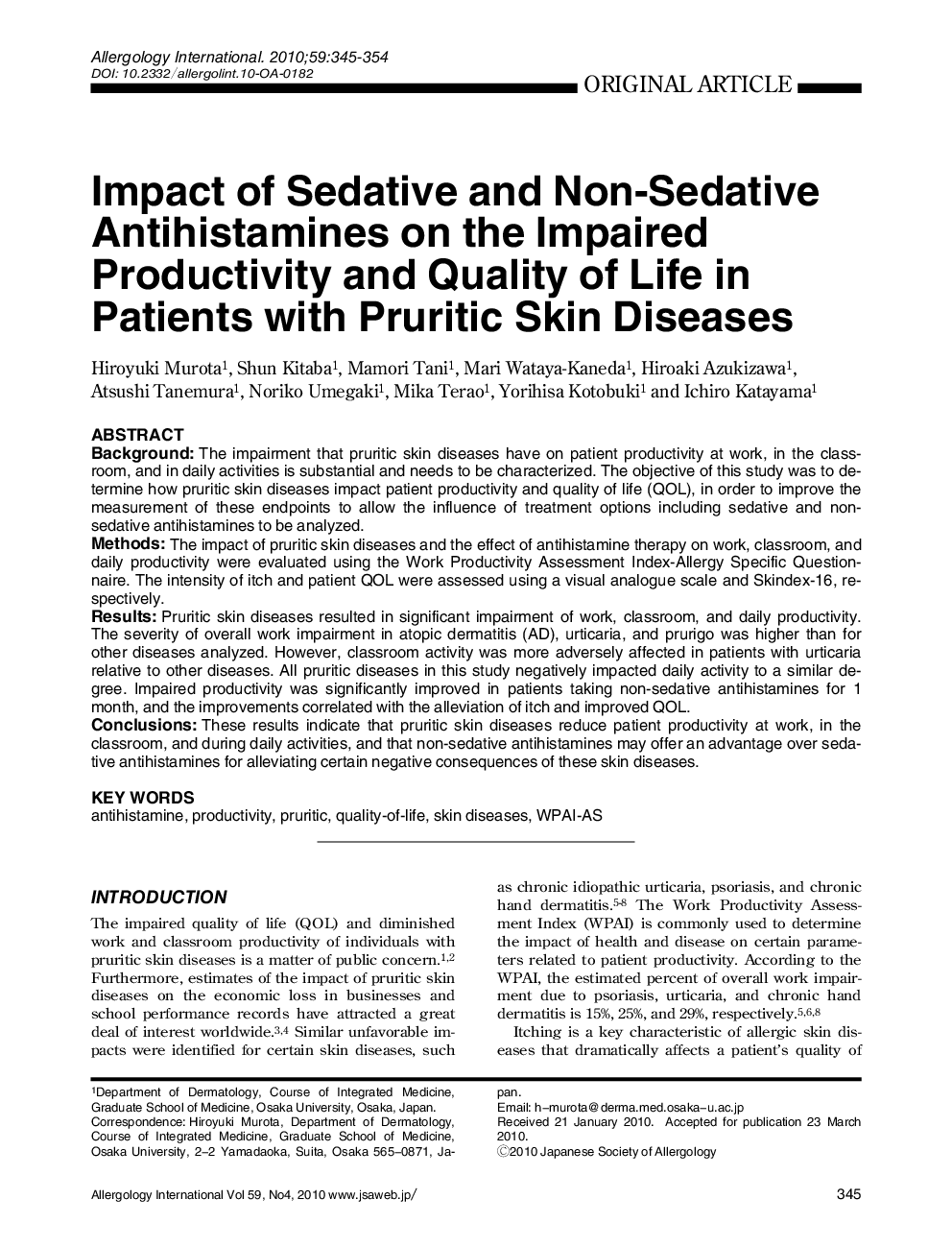| Article ID | Journal | Published Year | Pages | File Type |
|---|---|---|---|---|
| 3340930 | Allergology International | 2010 | 10 Pages |
ABSTRACTBackgroundThe impairment that pruritic skin diseases have on patient productivity at work, in the classroom, and in daily activities is substantial and needs to be characterized. The objective of this study was to determine how pruritic skin diseases impact patient productivity and quality of life (QOL), in order to improve the measurement of these endpoints to allow the influence of treatment options including sedative and non- sedative antihistamines to be analyzed.MethodsThe impact of pruritic skin diseases and the effect of antihistamine therapy on work, classroom, and daily productivity were evaluated using the Work Productivity Assessment Index-Allergy Specific Questionnaire. The intensity of itch and patient QOL were assessed using a visual analogue scale and Skindex-16, respectively.ResultsPruritic skin diseases resulted in significant impairment of work, classroom, and daily productivity. The severity of overall work impairment in atopic dermatitis (AD), urticaria, and prurigo was higher than for other diseases analyzed. However, classroom activity was more adversely affected in patients with urticaria relative to other diseases. All pruritic diseases in this study negatively impacted daily activity to a similar degree. Impaired productivity was significantly improved in patients taking non-sedative antihistamines for 1 month, and the improvements correlated with the alleviation of itch and improved QOL.ConclusionsThese results indicate that pruritic skin diseases reduce patient productivity at work, in the classroom, and during daily activities, and that non-sedative antihistamines may offer an advantage over sedative antihistamines for alleviating certain negative consequences of these skin diseases.
